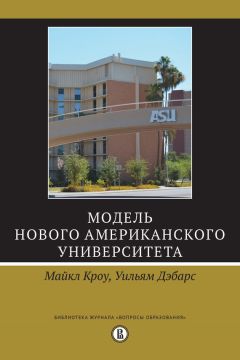Ознакомительная версия.
127
Jaimovich N., Siu Н.Е. The Trend Is the Cycle: Job Polarization and Jobless Recoveries: NBER Working Paper No. 18334. 2012. August. P. 2, 7–9. <http:// www.nber.org/papers/wl8334>.
Autor D.H. The Polarization of Job Opportunities in the U.S. Labor Market: Implications for Employment and Earnings. Washington, DC: Center for American Progress, 2010. P. 9. См. также: Autor D.H., Katz L.F., Kearney M.S. The Polarization of the Labor Market // American Economic Review. 2006. Vol.96. No. 2. P. 189–194.
Stiglitz J.E. Price of Inequality… P. 9.
DeNavas-Walt С., Proctor B.D., Smith J.C. U.S. Census Bureau, Current Population Reports, P60-243, Income, Poverty, and Health Insurance Coverage in the United States: 2011. Washington, DC: U.S. Government Printing Office, 2012; цит. no: Rampell C. Behind the Decline in Incomes // New York Times. 2012. September 12. <http://economix.blogs.nytimes.com/2012/09/12/ behind-the-decline-in-incomes/>.
В первую очередь см. отчет Центра Пью по штатам: Pew Center for the States / Pursuing the American Dream: Economic Mobility across Generations. Washington, DC: Economic Mobility Project, Pew Charitable Trusts. 2012.
Baum S., Ma J., Payea K. Education Pays, 2013: The Benefits of Higher Education for Individuals and Society. N.Y.: College Board. 2013. 34. Приводимые числа относятся к зачислениям в вузы всех институциональных типов, включая муниципальные колледжи двухгодичного цикла.
Bowen Е.М., Kurzweil М.А., Tobin W.G. Equity and Excellence in American Higher Education. P. 98–99. Fig. 5.2.
Mettler S. College, the Great Unleveler // New York Times. 2014. March 1.
Mortenson T.G. Bachelor’s Degree Attainment by Age 24 by Family Income Quartiles, 1970–2010. Oskaloosa, IA: Pell Institute for the Study of Opportunity in Higher Education, 2010.
Bailey M.J., Dynarski S.M. Gains and Gaps: Changing Inequality in U.S. College Entry and Completion: NBER Working Paper No. 17633. 2011. P. 4–5. <http://www.nber.org/papers/wl7633>.
Pursuing the American Dream. Economic Mobility Across Generations / The Pew Charitable Trusts. 2012. P. 2. <http://www.pewtrusts.org/en/research-and-analysis/reports/OOO 1/01/0 l/pursuing-the-american-dream>.
Isaacs J.B. Economic Mobility of Families across Generations // Getting Ahead or Losing Ground: Economic Mobility in America / ed. by J.B. Isaacs, I.V. Sawhill, R. Haskins. Washington, DC: Brookings Institution, 2012. P. 19. По их данным, среди выходцев из низшего доходного квинтиля 42 % так и остаются внизу, еще 42 % попадают лишь во второй или третий квинтили. «Лишь 17 % выходцев из низшего квинтиля удается перебраться в два верхних квинтиля». При этом среди детей, чьи родители достигли высшего квинтиля, 39 % остаются наверху, а 23 % сползают в более нижний квинтиль.
Economics of Higher Education / U.S. Departments of Treasury and Education. P. 15–16. Fig. 6.
Urahn S.K. et al. Pursuing the American Dream: Economic Mobility across Generations. Washington, DC: Pew Charitable Trusts, 2012. P. 25.
Isaacs J.B. Economic Mobility of Families… P. 19.
Карневале А.; цит. no: Edsall T.B. The Reproduction of Privilege // New York Times. 2012. March 12.
Carnevale A.P., Strohl J. How Increasing College Access Is Increasing Inequality… P.71.
Brooks D. The Education Gap // New York Times. 2005. September 25.
Ibid.; Reardon S.F. The Widening Academic Achievement Gap between the Rich and the Poor: New Evidence and Possible Explanations // Whither Opportunity? Rising Inequality, Schools, and Children’s Life Chances / ed. by G.J. Duncan, R.J. Murname. N.Y.: Russell Sage Foundation, 2011. P. 4–5.
Edsall Th. E. Reproduction of Privilege…//New York Times. 2012. March 12.
Leonhardt D. Top Colleges Largely for the Elite I I New York Times. 2011. May 24. Приведенные данные относятся к осени 2003 г.
Dreier R, Kahlenberg R.D. Making Top Colleges Less Aristocratic and More Meritocratic // New York Times. 2014. September 12.
Florida R. The Rise of the Creative Class: And How It Is Transforming Work, Leisure, Community, and Everyday Life. N.Y.: Basic Books, 2002 (рус. nep.: Флорида P. Креативный класс: люди, которые меняют будущее. М.: Классика-XXI, 2005).
Piketty Т. Capital in the Twenty First Century. Cambridge, MA: Harvard University Press, 2014. P. 22, 71.
Mettler S. Degrees of Inequality: How the Politics of Higher Education Sabotaged the American Dream. N.Y.: Basic Books, 2014. P. 5.
Goldin C., Katz L.F. Race between Education and Technology… P. 22.
Turner В. Going to College… P. 13–16; Carnevale A.P., Strohl J. How Increasing College Access Is Increasing Inequality… P. 73.
Hacker A. Is Algebra Necessary?//NewYork Times. 2012. July 28; Chapman С., Laird J., Ifill N. et al. Trends in High School Dropout and Completion Rates in the United States: 1972–2009 / U.S. Department of Education, NCES 2012-006. Washington, DC: National Center for Education Statistics, 2011. P.50. Table 12.
Swanson C.B. Closing the Graduation Gap: Educational and Economic Conditions in America’s Largest Cities. Bethesda, MD: Editorial Projects in Education, 2009.
Greene J.P., Forster G. Public High School Graduation and College Readiness Rates in the United States: Education Working Paper No. 3. Center for Civic Innovation, Manhattan Institute. September 2003. По данным этого отчета, в 2001 г. лишь 20 % темнокожих студентов и 16 % студентов латиноамериканского происхождения были в достаточной мере подготовлены к поступлению в колледж.
Hoxby С.М., Avery С. The Missing ‘One-Offs’: The Hidden Supply of High-Achieving, Low-Income Students: NBER Working Paper No. 18586. 2012. <http://www.nber.org/papers/wl8586>.
Rising above the Gathering Storm Revisited… P. 49–50.
Анализ данных по ОЭСР за 2009 г., выполненный экспертами Брукингского института; цит. по: Rothwell J. et al. Patenting Prosperity: Invention and Economic Performance in the United States and Its Metropolitan Areas. Washington, DC: Brookings Institution, 2013. P. 32. Table 16.
Проведенное в 2011 г. сопоставление уровня образования по возрастным когортам 25-34-летних и 55-64-летних показало, что старшее поколение американцев по доле окончивших бакалавриат занимало 5-е место в мире, тогда как молодое поколение скатилось на 12-е место: доля индивидов с бакалаврским дипломом среди них составила 42 %. Аналогичное сопоставление в Корее, проведенное в 2009 г., выявило обратную тенденцию: лишь 13 % представителей старшего поколения окончили колледж, тогда как среди молодых эта доля достигает 63 %. Таким образом, масштаб охвата высшим образованием в Корее вырос более чем в 4 раза, и страна сегодня лидирует по этому показателю среди промышленных стран, картина же в США остается практически без изменений. См.: Education at a Glance 2013: OECD Indicators. <http:// dx.doi.org/10.1787/eag-2013-en>.
Porter E. A Simple Equation: More Education = More Income // New York Times. 2014. September 10.
Goldin C.D., Katz L.F. Race between Education and Technology… P. 326–327. Fig. 9.1.
Turner В. Going to College and Finishing College…; Carnevale A.P., Strohl J. How Increasing College Access… P. 73.
Bowen W.G., Chingos M.M., McPherson M.S. Crossing the Finish Line… P. 1, 88,104,109–110, 266. N. 5.
American Association of Community Colleges, 2014 Fact Sheet.
Obama В. Remarks by the President on the American Graduation Initiative / Macomb Community College. Warren. Michigan, 2009. July 14.
Gordon R.J. Demise of U.S. Economic Growth. P. 11. См. также: Gordon R.J. The Great Stagnation of American Education // New York Times. 2013. September 7.
Hoachlander G., Sikora A.C., Horn L Community College Students // Education Statistics Quarterly. 2003. Vol. 5. No. 2. P. 121–128.
Bound Lovenheim M.F., Turner S. Why Have College Completion Rates Declined? An Analysis of Changing Student Preparation and Collegiate Resources // American Economic Journal: Applied Economics. 2010. Vol. 2. No. 3. P. 129–157.
Hoxby С., Avery Ch. Missing ‘One-Offs’… P. 1. Авторы поясняют: «малоимущий» означает принадлежность к низшему доходному квартилю среди семей, в которых есть один старшеклассник; «хорошо успевающий ученик» – тот, кто по результатам тестов ACT или SAT I (математика и родной язык) попал в группу выше 90-го процентиля и имеет средние оценки А и выше. «Селективные» колледжи и университеты относятся к высшим категориям (Very Competitive Plus, Highly Competitive, Highly Competitive Plus, and Most Competitive) в каталоге американских колледжей от издательства Barron’s. В каталоге 2008 г. такой статус получили 236 учебных заведений (1, n. 1).
Ibid. Р. 11.
По данным IPEDS, в 2008–2009 гг. среднюю школу в США окончили 3,039 млн чел. (Snyder T.D., Dillow S.A. Digest of Education Statistics. 2011. Table 35).
Brooks D. Education Gap…
Carnevale A.P., Smith N., Strohl J. Help Wanted. P. 3, 13.
Autor D.H. Skills, Education, and the Rise of Earnings Inequality Among the ‘Other 99 Percent’ // Science. 2014. Vol. 344. No. 6186. P. 843.
Economics of Higher Education / U.S. Departments of Treasury and Education. P. 3, 5,13.
The Big Payoff: Educational Attainment and Synthetic Estimates of Work-Life Earnings (Current Population Survey P23-210) / U.S. Census Bureau. 2002. P. 4. Данные рассчитаны в долларах 1999 г. для предполагаемого 40-летнего трудового стажа.
Economics of Higher Education / U.S. Departments of Treasury and Education. P. 3.
Employment status of the civilian population 25 years and over by educational attainment / Bureau of Labor Statistics. Table A-4.
Baum S., Ma J., Payea K. Education Pays. P. 19.
Mortenson Th.G. et al. Why College? Private Correlates of Educational Attainment // Postsecondary Education Opportunity: The Mortenson Research Seminar on Public Policy Analysis of Opportunity for Postsecondary Education. 1999. Vol. 81. March.
Moretti Е. Estimating the Social Return to Higher Education: Evidence from Longitudinal and Repeated Cross-Sectional Data//Journal of Econometrics. 2004. Vol. 121. P. 175–212. Согласно расчетам Моретти, все работники из местного занятого населения извлекли пользу из роста пропорции обладателей дипломов бакалавра. Он сообщает, что «рост на один процентный пункт в предложении выпускников колледжа приводит к повышению зарплат бросивших учебу в средней школе на 1,9 %, зарплат выпускников школ на 1,6 %, а выпускников колледжа – на 0,4 %» (Р. 175).
Ознакомительная версия.





